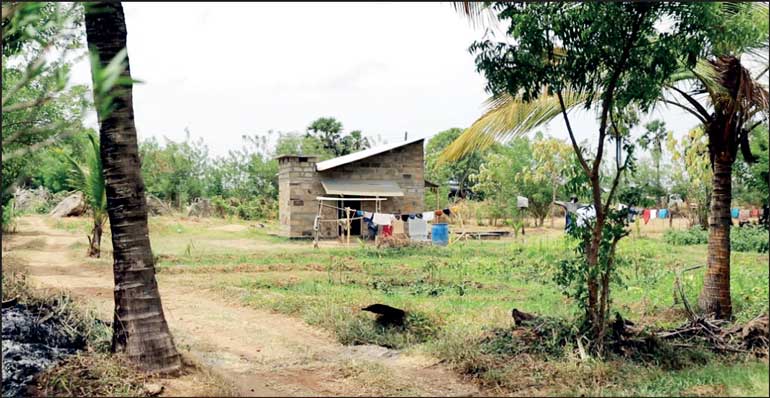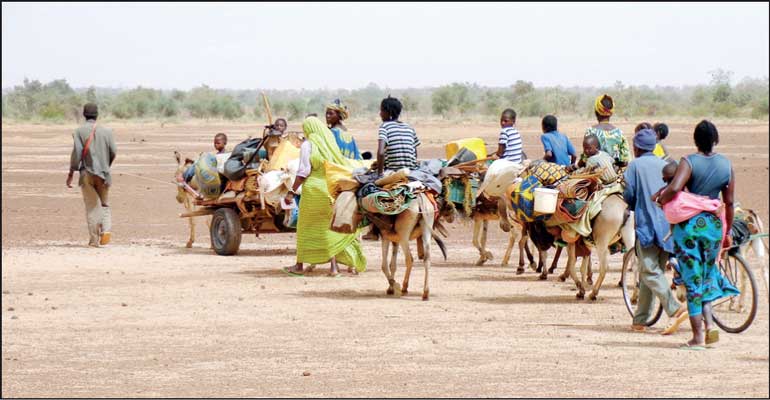Tuesday Jan 13, 2026
Tuesday Jan 13, 2026
Friday, 1 April 2022 00:00 - - {{hitsCtrl.values.hits}}

The new IPCC report highlights the nexus of climate change and human mobility as a key cross-cutting area of research

According to the IPCC report, approximately 3.3 to 3.6 billion people worldwide live in contexts that are highly vulnerable to climate change
The impacts of climate change are vast and far-reaching. Through sudden-onset events and long-term processes, they can affect every sector and every facet of human life. In many cases, climate change is cross-cutting and works in direct and indirect ways to shape the lives and livelihoods of individuals, households, communities, and countries.
cross-cutting and works in direct and indirect ways to shape the lives and livelihoods of individuals, households, communities, and countries.
One such cross-cutting area is the nexus of climate change and human mobility, which is increasingly being acknowledged and investigated by science. This nexus includes different climate impacts as well as different forms and patterns of mobility, such as internal migration, foreign employment, seasonal migration from farming communities, or disaster displacement. Sometimes, humans move because of climate change, driven by floods, storms, or other disasters; at other times, climate-related factors become another part of the decision-making process, for example when climate change causes recurring droughts, degrades ecosystems, or reduces agricultural productivity and incomes.
Climate-induced migration in South Asia
Across the world, streams of human mobility are increasingly affected by and intertwined with climate change. The latest report from the Intergovernmental Panel on Climate Change (IPCC), which presents the current consensus of climate science, points out that numerous studies have found “significant links between temperature or precipitation anomalies, or extreme weather events such as storms or floods, and internal as well as international migration.” Since the IPCC’s fifth assessment report in 2014, new evidence has documented a widespread effects of climate change on human mobility, particularly migration and displacement.
In South Asia and Sri Lanka, research has found direct and indirect links between migration and climate impacts on food systems, water resources, natural ecosystems, and other key sectors. According to the above-mentioned IPCC report, which was published end of February and represents the second part of the IPCC’s sixth assessment report, one in three migrants world-wide comes from Asia, where migration is a key livelihood strategy for millions.
The IPCC report outlines the existence of robust evidence that climate change is already driving migration and influencing mobility patterns throughout the region. It also mentions that “by one estimate, in South Asia, internal climate migrants […] are projected to be 40 million by 2050 (1.8 percent of regional population) under [a] high warming [scenario].” While there is disagreement about exact number of climate migrants projected for 2050 and beyond, most researchers agree that climate change will lead to a significant increase of people on the move over the coming decades.
Migration as climate change adaptation
How and why people migrate depends on a complex web of sociocultural, economic, and environmental factors. Migration is a potential form of adaptation, but this adaptive potential has to be carefully evaluated on a context-specific basis and does not substitute building other adaptative capacities in communities with out-migration. There is a danger of climate-induced migration turning into maladaptation, which would mean that it actually increases vulnerability. For example, negative consequences of climate migration can include adverse impacts to health, unsustainable exploitation of natural resources, gender-based violence, or discrimination. As the IPCC report states, “maladaptation has been reported most frequently in the context of agriculture and migration in the global south,” highlighting the need to support migrants, facilitate adaptative migration, and prevent maladaptation through forced or involuntary mobility.
According to the IPCC report, approximately 3.3 to 3.6 billion people world-wide live in contexts that are highly vulnerable to climate change. For many of these people, adaptation measures can help them to stay in place and find ways to thrive in a changing environment. However, the report also highlights the fact that there are hard and soft limits to in-situ adaptation, and that not everyone out of these billions might be able to adapt in place. However, there can be ways to stretch these limits and build the resilience of communities, allowing them to stay in places to which they have historical, cultural, and communal attachments. “Proactive investments in health, social, and physical infrastructure […] build societal adaptive capacity and household resilience,” which in turn will reduce migration drivers and help communities to stay where they are.
In other cases, migration can help to compensate for declining productivity, income, employment opportunities, and access to natural resources. When migration works as an adaptation tool, it can allow these households and communities to diversify their livelihoods and enhance incomes, distribute risks across a larger region, access new markets and networks, benefit from increased exposure, and exchange information, skills, or resources. Particularly in cases where climate change shapes pre-existing migration streams, it is therefore important to make these movements safer and more reliable to enable people to harness the full potential of migration as an adaptation option.
However, individuals and communities might be willing but unable to move. “The threshold at which household adaptation transitions from in situ measures to migration is highly context-specific and reflects the degree of exposure to specific climate risks, mobility options and the socio-economic circumstances,” as the report states. Migration requires a minimum level of resources and often needs to overcome barriers and constraints, for example in terms of travel, language, social or cultural factors, (social) networks, or administrative structures and laws.
“Expanding the range of adaptation options available to households increases the likelihood that, when migration does occur, it does so under conditions of high agency that lead to greater chances of success. Robust institutional setups, an enabling legal environment, and transboundary adaptation policies are some examples of measures that can further facilitate safe, secure, orderly, and successful migration as a way to overcome the limits of in-situ adaptation.
Climate change and human mobility
The new IPCC report refers to climate-induced human mobility in many places across several of its key chapters. This renewed focus highlights both the findings of recent research as well as the need for further evidence and an enhanced understanding of the complex interlinkages between climate change, migration, and disaster displacement. Some of the key messages from these 3,700 pages of compiled climate science include the fact that climate change already shapes human mobility across the world and will continue to do so, although exact predictions about the future are difficult to make. Most of this movement takes place within countries or between neighbouring countries, often driven by heavy rains, flooding, droughts, or tropical storms. Migration can be an adaptative measure, but it is no substitute for strengthening adaptive capacities in place, and its success greatly depends on the circumstances, with a serious danger of negative consequences and maladaptation.
Science is now more certain than ever that climate change plays a role for human mobility and influences or reshapes patterns of migration. Going forward into the future, it is important to continue research on this nexus and find ways to facilitate adaptative migration and protect climate-vulnerable communities, migrants, their families, and host communities at the same time.
(The writer works as Director – Research and Knowledge Management at SLYCAN Trust, a non-profit think tank based in Sri Lanka. His work focuses on climate change, adaptation, resilience, ecosystem conservation, just transition, human mobility, and a range of related issues. He holds a Master’s degree in Education from the University of Cologne, Germany and is a regular writer to several international and local media outlets.)